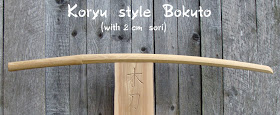Dear ladies,
I apologize if it seems that I forgot about you in my work.
This is one of the
projects that was a long
time in my
drawer (there
are still
plenty
of),
I planned to present it on the first Kunoichi TAIKAI, but unfortunately due to personal problems remained unfinished until now.
In front of you is the simplest version of Neko Te for training, it was made of rubber to be safe and prevent injuries,
I have a similar version of the metal, on which I
still work,
to make it easy to adjust the size of finger person which will use it.
According to the book "NINJUTSU History ad Tradition" from Soke Hatsumi, this
weapon of Kunoichi we called "Neko te"
Originally, this instrument of female Ninja is
made of leather and
steel,
Neko te, fingertip weapons, as the book says, turn a Kunoichi's hand into a death- dealing claw,
how you are use it, I live up to you or your sensei's .
As
for the technical side I can
say that this
tool requires
adjustment to
the size of
your fingers,
soon
I will explain how you can easily make a measurement of your finger, if you decided ask me to make this tool for you.
Anyway, I will add new info about this project so
check this topic from
time to
time if you are interested.



















































